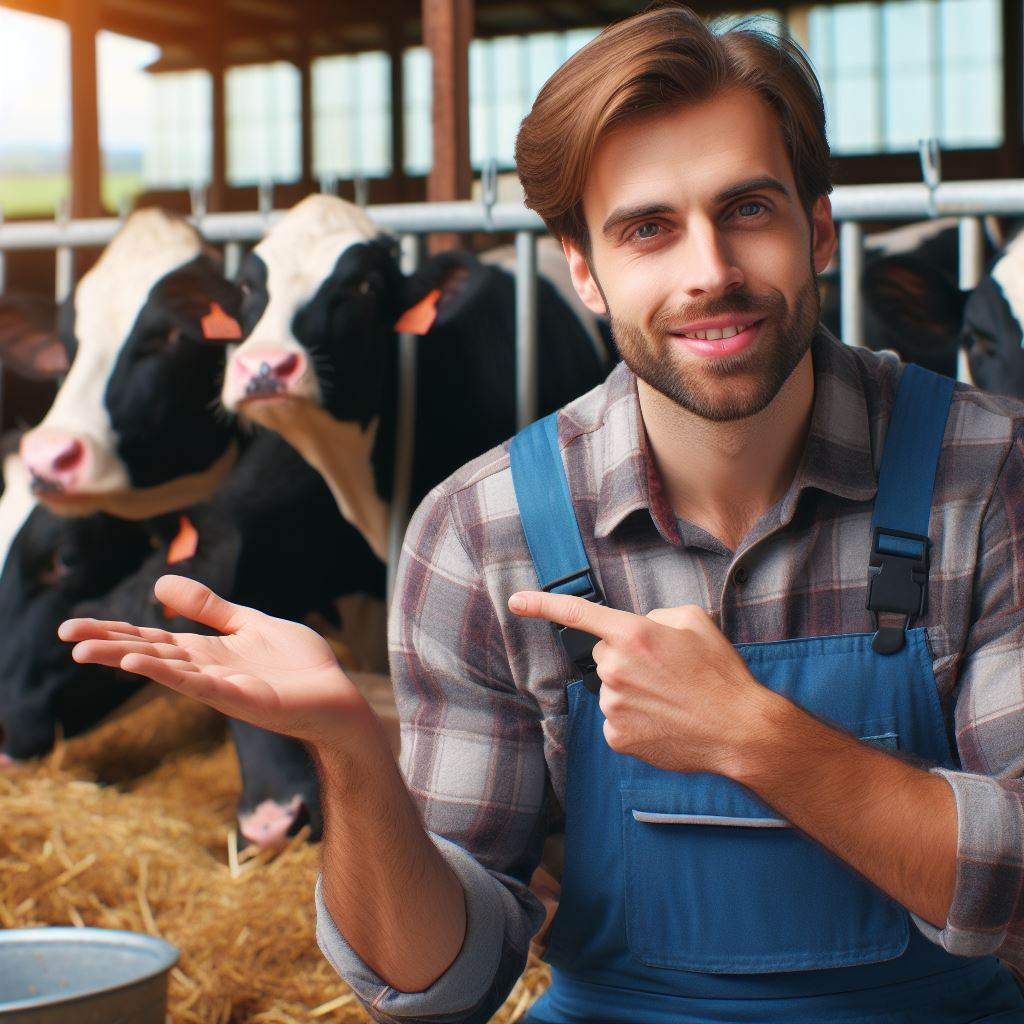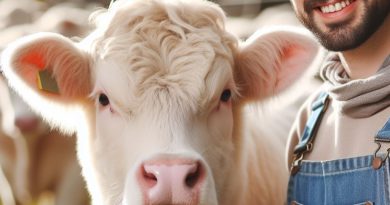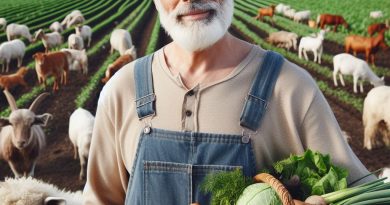Livestock Waste Management 101
Last Updated on February 7, 2024
Introduction
A. Importance of Livestock Waste Management
- Efficient waste management is crucial for sustainable livestock farming.
- Proper management reduces environmental pollution and conserves resources.
- It minimizes health risks for both animals and humans.
- Effective waste handling enhances soil quality and promotes crop growth.
- It contributes to the overall sustainability of agricultural practices.
B. Overview of the Consequences of Improper Waste Management
- Pollution of water sources due to runoff contamination.
- Air pollution from methane and ammonia emissions.
- Spread of diseases through pathogens present in waste.
- Soil degradation leading to reduced agricultural productivity.
- Negative impacts on biodiversity and ecosystem health.
In summary, livestock waste management is indispensable for environmental, agricultural, and public health concerns.
Failure to address it properly can result in far-reaching consequences, affecting ecosystems, economies, and human well-being.
Thus, implementing effective waste management strategies is imperative for the sustainable development of the livestock industry.
Understanding Livestock Waste
A. Definition of Livestock Waste
Livestock waste refers to the organic byproducts generated by domesticated animals kept for commercial purposes.
B. Different Types of Livestock Waste
- Manure: Solid waste consisting of feces and bedding materials.
- Urine: Liquid waste produced by the animals.
- Bedding: Material used to provide comfort and absorb moisture in animal enclosures.
- Feed leftovers: Uneaten feed that becomes waste after animals finish their meals.
- Silage effluent: Liquid runoff from silage, a fermented feed source for livestock.
C. Quantities of Waste Produced by Various Types of Livestock
Each type of livestock produces different amounts and compositions of waste:
1. Cattle
- Manure: A mature cow can produce up to 70 pounds of manure per day.
- Urine: Approximately 5-10 gallons of urine are generated by cattle daily.
- Bedding: Bedding requirements vary depending on housing systems and climate conditions.
2. Poultry
- Manure: Chickens produce 0.25 pounds of manure per bird per day.
- Urine: Poultry urine is mixed with manure and can exceed manure amounts in weight.
- Bedding: Poultry litter includes bedding materials, manure, feathers, and spilled feed.
3. Pigs
- Manure: Pig excrete approximately 1.2 to 1.5 times their body weight in manure annually.
- Urine: Pigs produce a similar quantity of urine as manure.
- Bedding: Bedding materials used for pigs can include straw, sawdust, or wood shavings.
4. Sheep and Goats
- Manure: Sheep and goats produce around 0.05 pounds of manure per pound of body weight daily.
- Urine: Quantities of urine are typically lower in sheep and goats compared to other livestock.
- Bedding: Bedding materials for small ruminants can include straw, hay, or wood chips.
It is important to consider the waste produced by different livestock species when implementing waste management strategies.
Read: Rotational Grazing: Benefits & Tips
Environmental Impacts
In livestock waste management, there are various environmental impacts that need to be considered.
These impacts include:
A. Water Pollution Caused by Nutrient Runoff
Livestock waste contains high levels of nutrients such as nitrogen and phosphorus, which can runoff into nearby water bodies.
When this happens, it can lead to eutrophication, a process that degrades water quality and harms aquatic life.
B. Air Pollution from Ammonia Emissions
Ammonia is a common byproduct of livestock waste decomposition.
When released into the air, it can contribute to air pollution, particularly in areas with large concentrations of livestock operations.
Exposure to high levels of ammonia can negatively affect human and animal respiratory systems.
C. Greenhouse Gas Emissions from Waste Decomposition
Livestock waste releases significant amounts of methane, a potent greenhouse gas, during decomposition.
Methane has a much higher warming potential compared to carbon dioxide, contributing to climate change and global warming.
Effective waste management practices can help reduce these emissions.
D. Impact of Waste on Biodiversity and Ecosystems
Improper disposal and management of livestock waste can have detrimental effects on biodiversity and ecosystems.
High nutrient levels in the waste can cause imbalances in natural ecosystems, leading to the growth of harmful algal blooms and disrupting the food chain.
Additionally, the use of certain waste management systems can lead to habitat destruction and loss of biodiversity.
To minimize these environmental impacts, it is essential to implement proper livestock waste management strategies.
This includes adopting technologies and practices that reduce nutrient runoff, capturing and treating waste gases, and implementing responsible waste disposal methods.
By prioritizing environmental sustainability in livestock waste management, we can protect our water resources, air quality, climate, and biodiversity.
Read: Guide to Sustainable Animal Shelters
Health and Safety Concerns
A. Spread of diseases and pathogens
Improper management of livestock waste can lead to the spread of diseases and pathogens.
These diseases and pathogens can infect the animals and eventually affect humans.
Pathogens can contaminate the soil, water, and air, posing a significant risk to public health.
Livestock waste contains harmful bacteria such as E. coli, salmonella, and campylobacter.
Inadequate waste management can result in the transmission of these bacteria to humans.
B. Occupational hazards for farm workers
Farm workers who handle livestock waste face various occupational hazards.
Exposure to harmful gases like hydrogen sulfide, methane, and ammonia can cause respiratory problems.
Ammonia can also irritate the skin, eyes, and respiratory system, leading to health issues.
Farm workers are at risk of injuries due to slippery surfaces caused by waste spillage.
They can also suffer from musculoskeletal disorders due to repetitive tasks and heavy lifting.
C. Negative impact on public health if waste is not properly managed
Improperly managed livestock waste can have severe consequences on public health.
Contaminated water sources can lead to waterborne diseases like cholera and dysentery.
Air pollutants emitted from decomposing waste can worsen respiratory conditions like asthma.
Exposure to livestock waste can also lead to allergic reactions, skin irritations, and eye infections.
The release of greenhouse gases from waste contributes to climate change, affecting global health.
D. Importance of proper waste management
Proper waste management is crucial to mitigate health and safety concerns.
Implementing appropriate waste disposal techniques minimizes the risk of disease transmission.
Regular inspections and maintenance of waste storage facilities ensure safety for farm workers.
Treating and composting waste can significantly reduce the emission of harmful gases and pathogens.
Efficient waste management practices protect both animal and human health while safeguarding the environment.
E. Preventive measures for health and safety concerns
Effective preventive measures are essential for addressing health and safety concerns related to livestock waste.
Farmers should provide protective equipment like masks, gloves, and boots to farm workers.
Training programs should be conducted to educate workers about the potential hazards and safety protocols.
Farmers should develop and implement proper waste management plans tailored to their specific needs.
Regular monitoring and analysis of waste samples can detect and prevent disease outbreaks.
Collaboration between farmers, government agencies, and public health officials is crucial for successful waste management.
In essence, health and safety concerns associated with livestock waste require proper management and preventive measures.
The spread of diseases and pathogens, occupational hazards, and negative impact on public health emphasize the need for action.
By prioritizing waste management practices, we can protect the well-being of farm workers, animals, and the general public.
Adopting preventive measures and promoting collaboration will lead to a safer and healthier environment for all.
Read: Water Saving in Animal Farming

Best Practices for Livestock Waste Management
In order to effectively manage livestock waste, it is important to follow certain best practices:
A. Proper storage and containment systems
- Invest in well-designed storage facilities for manure and other waste materials.
- Ensure that storage structures are leak-proof and have proper ventilation systems.
- Regularly inspect and maintain storage systems to prevent any leakage or overflow issues.
B. Effective waste treatment methods (composting, anaerobic digestion, etc.)
- Consider implementing composting techniques to convert organic waste into valuable fertilizer.
- Explore anaerobic digestion as a way to break down waste and generate renewable energy.
- Partner with local waste treatment plants to safely dispose of hazardous waste materials.
C. Nutrient management plans for responsible utilization of waste
- Develop a nutrient management plan to ensure the proper utilization of waste nutrients.
- Regularly test the nutrient content of waste to determine appropriate application rates.
- Adopt precision farming techniques to accurately apply waste nutrients to crops.
D. Land application techniques and regulations
- Follow local regulations and guidelines for land application of livestock waste.
- Understand the nutrient needs of the specific crops being grown and adjust waste application accordingly.
- Avoid over-application of waste to prevent nutrient runoff and water pollution.
By implementing these best practices, livestock producers can effectively manage waste while minimizing environmental impacts and maximizing the potential benefits of livestock waste.
Read: Eco-Friendly Livestock Feeding Tips
Innovations in Livestock Waste Management
Livestock waste management has evolved significantly over the years, with advancements in waste treatment technologies, integration of renewable energy systems, and precision agriculture techniques leading the way.
These innovations have allowed for more efficient and sustainable waste utilization, helping to mitigate environmental impact and improve overall farm operations.
In this section, we will explore the latest innovations in livestock waste management.
A. Advancements in waste treatment technologies
- Anaerobic digestion: Anaerobic digesters are becoming increasingly popular in livestock waste management.
These systems convert organic waste into biogas, which can be used for heat and electricity generation. The remaining digestate can be used as fertilizer. - Composting: Composting is a natural process that decomposes organic waste into nutrient-rich soil amendments.
This method is cost-effective and environmentally friendly, reducing the reliance on chemical fertilizers. - Nutrient recovery technologies: Technologies such as phosphorus and nitrogen recovery systems help capture and recycle valuable nutrients from livestock waste.
These nutrients can then be used as fertilizer, reducing the need for artificial fertilizers.
B. Integration of renewable energy systems with waste management
- Biogas utilization: Biogas produced during anaerobic digestion can be used as a renewable source of energy.
It can replace fossil fuels and reduce greenhouse gas emissions, making livestock waste management more sustainable. - Solar power: Livestock farms can also incorporate solar panels to generate electricity.
Solar energy can power various aspects of waste management systems, reducing reliance on traditional energy sources. - Wind turbines: In areas with suitable wind conditions, wind turbines can be installed to generate renewable electricity.
This clean energy can be used to power waste treatment facilities and other farm operations.
C. Precision agriculture techniques for efficient waste utilization
- Nutrient management planning: Precision agriculture technologies, such as soil sensors and GPS mapping, can help farmers optimize nutrient application based on soil testing and crop needs. This reduces waste accumulation and ensures efficient nutrient utilization.
- Variable rate technology: Variable rate application equipment enables farmers to apply fertilizers or manure at different rates based on soil nutrient levels and crop requirements. This saves resources and minimizes environmental impact.
- Controlled release fertilizers: Controlled release fertilizers slowly release nutrients over time, matching the nutrient uptake needs of crops. This reduces the risk of nutrient runoff and enhances waste utilization efficiency.
In general, innovations in livestock waste management have revolutionized the industry by improving waste treatment technologies, integrating renewable energy sources, and implementing precision agriculture techniques.
These advancements promote sustainability, minimize environmental impact, and enhance overall farm efficiency.
By adopting these innovations, livestock farmers can contribute to a greener and more sustainable agricultural sector.
Conclusion
Proper livestock waste management is crucial for several reasons. Firstly, it helps prevent pollution and protects the environment.
Secondly, it reduces the risk of diseases and improves animal welfare. Lastly, it can lead to financial benefits for farmers.
Therefore, it is essential for farmers to prioritize proper waste handling on their farms.
To achieve responsible waste management, farmers should implement appropriate waste handling practices such as properly storing and disposing of manure.
They should also consider using alternative waste treatment methods like composting or anaerobic digestion.
Additionally, regular monitoring and maintenance of waste management systems should be carried out to ensure effective results.
By prioritizing proper waste handling, farmers can experience positive outcomes.
They can reduce the environmental impact of their operations and contribute to the sustainability of the industry.
Moreover, responsible waste management can help enhance the quality of soil, water, and air in the surrounding area.
This, in turn, improves the overall health and well-being of both humans and animals.
In light of these benefits, it is important for farmers to take action and make responsible waste management a priority.
By doing so, they not only protect the environment but also ensure the sustainability and long-term success of their own operations.
Therefore, I urge every farmer to embrace proper livestock waste management practices and be part of the solution.
Together, we can make a positive impact on the environment and our communities.


